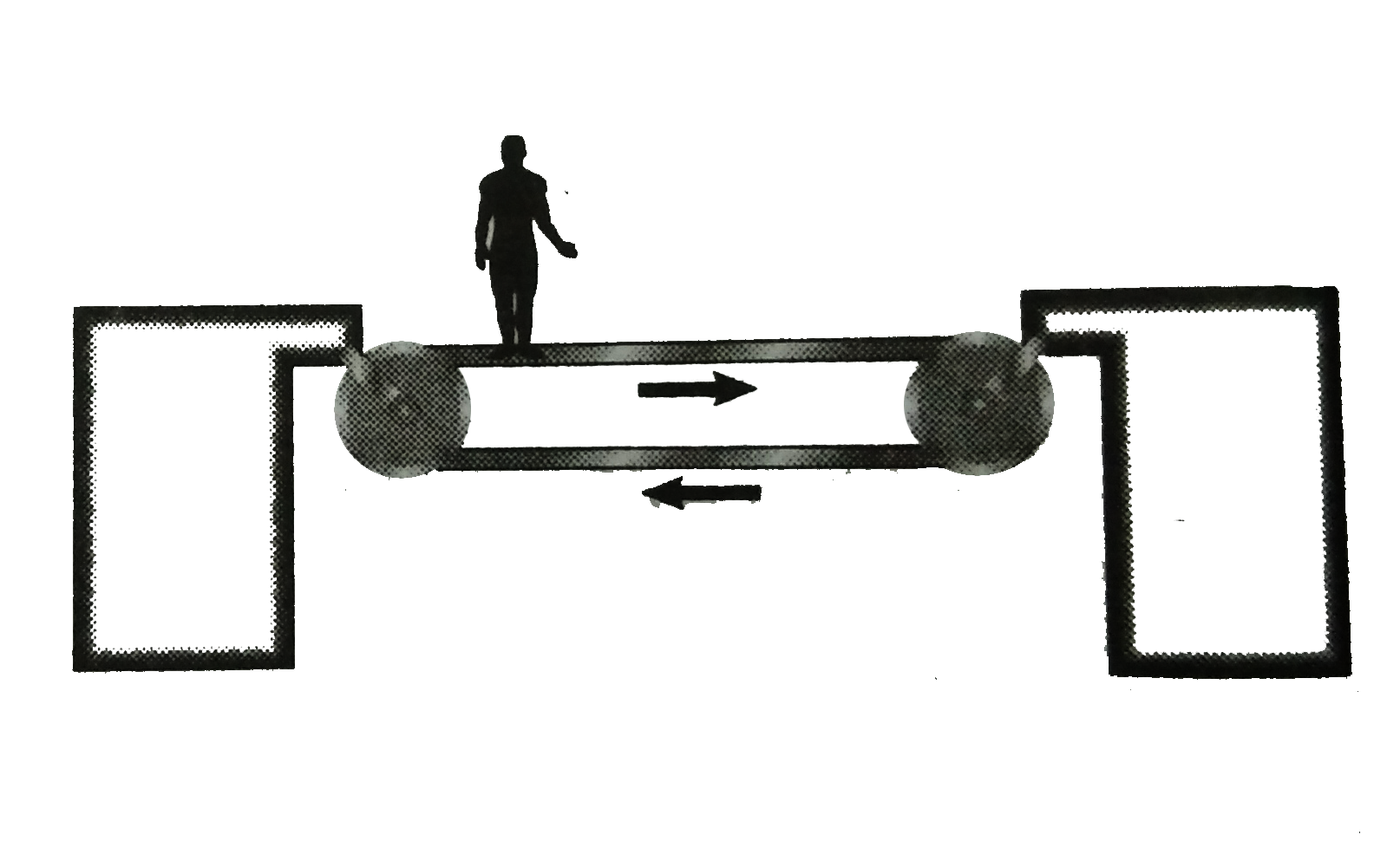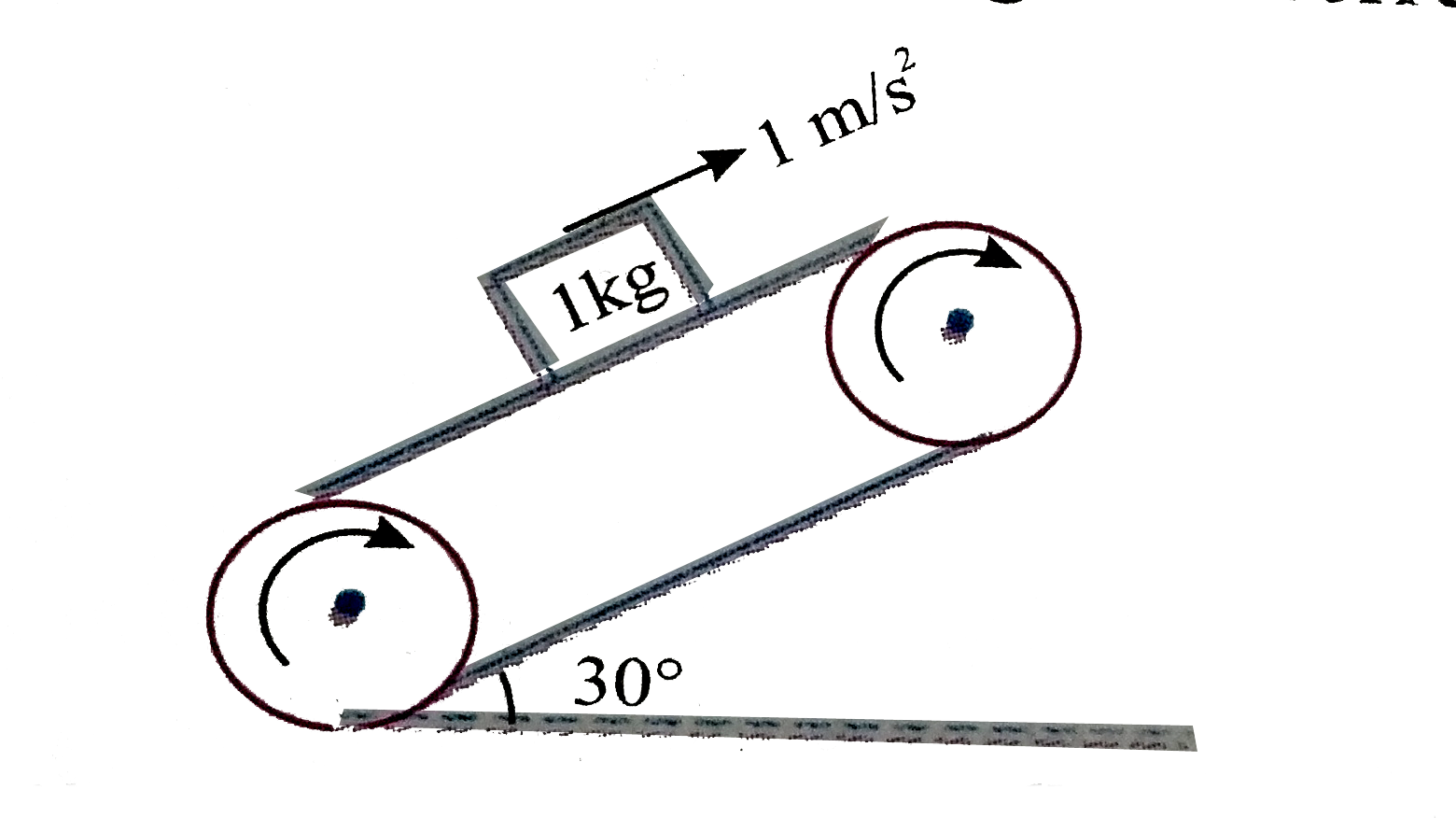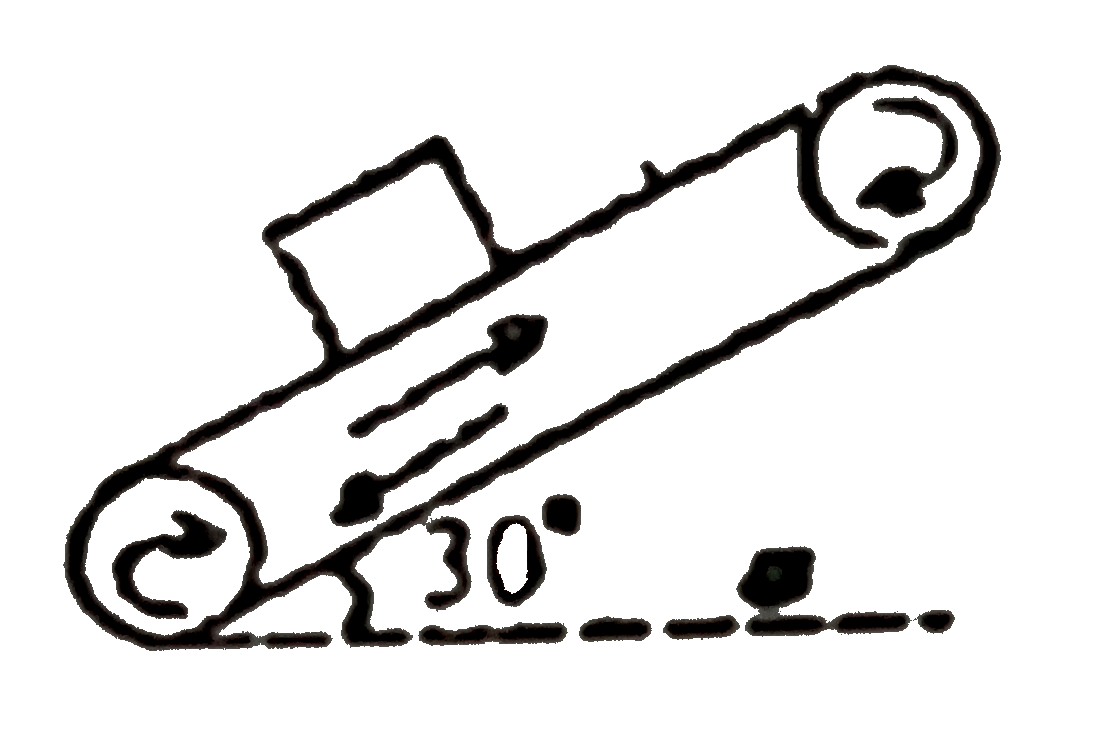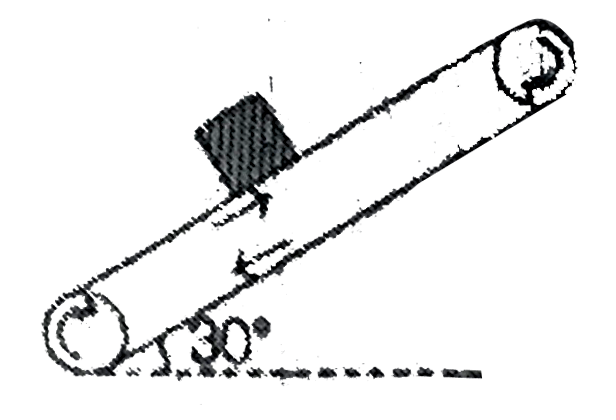A man of mass 65kg is standing stationary with respect to a conveyor belt which is accelerating with 1m/s2. if μs is 0.2 the net force on the man and the maximum acceleration of the belt so that the man is stationary relative to the belt are (g=10m/s2) .
zero,2m/s2
65N,2m/s2
zero,1m/s2
65N,1m/s2
The correct Answer is:A
To solve the problem step by step, we will analyze the forces acting on the man standing on the conveyor belt and calculate the required values.
Step 1: Identify the Given Data
- Mass of the man, m=65kg
- Acceleration of the conveyor belt, ab=1m/s2
- Coefficient of static friction, μs=0.2
- Acceleration due to gravity, g=10m/s2
Step 2: Calculate the Maximum Static Friction Force
The maximum static friction force (Ff) that can act on the man is given by the formula:
Ff=μs⋅N
where N is the normal force. Since the man is standing on a horizontal surface, the normal force is equal to the weight of the man:
N=m⋅g=65kg⋅10m/s2=650N
Now, substituting the values:
Ff=0.2⋅650N=130N
Step 3: Determine the Net Force on the Man
The net force (Fnet) acting on the man due to the acceleration of the conveyor belt can be calculated using Newton's second law:
Fnet=m⋅ab=65kg⋅1m/s2=65N
Step 4: Compare the Forces
For the man to remain stationary with respect to the conveyor belt, the maximum static friction force must be greater than or equal to the net force acting on him:
Ff≥Fnet
Substituting the values we found:
130N≥65N
This condition is satisfied, meaning the man can remain stationary relative to the belt.
Step 5: Calculate the Maximum Acceleration of the Belt
To find the maximum acceleration of the belt (amax) that allows the man to remain stationary relative to it, we set the maximum static friction force equal to the force required to accelerate the man:
Ff=m⋅amax
Substituting the known values:
130N=65kg⋅amax
Solving for amax:
amax=130N65kg=2m/s2
Final Answers
- The net force on the man is 65N.
- The maximum acceleration of the belt so that the man is stationary relative to the belt is 2m/s2.
- Mass of the man, m=65kg
- Acceleration of the conveyor belt, ab=1m/s2
- Coefficient of static friction, μs=0.2
- Acceleration due to gravity, g=10m/s2
The maximum static friction force (Ff) that can act on the man is given by the formula:
Ff=μs⋅N
where N is the normal force. Since the man is standing on a horizontal surface, the normal force is equal to the weight of the man:
N=m⋅g=65kg⋅10m/s2=650N
Now, substituting the values:
Ff=0.2⋅650N=130N
The net force (Fnet) acting on the man due to the acceleration of the conveyor belt can be calculated using Newton's second law:
Fnet=m⋅ab=65kg⋅1m/s2=65N
For the man to remain stationary with respect to the conveyor belt, the maximum static friction force must be greater than or equal to the net force acting on him:
Ff≥Fnet
Substituting the values we found:
130N≥65N
This condition is satisfied, meaning the man can remain stationary relative to the belt.
To find the maximum acceleration of the belt (amax) that allows the man to remain stationary relative to it, we set the maximum static friction force equal to the force required to accelerate the man:
Ff=m⋅amax
Substituting the known values:
130N=65kg⋅amax
Solving for amax:
amax=130N65kg=2m/s2
- The net force on the man is 65N.
- The maximum acceleration of the belt so that the man is stationary relative to the belt is 2m/s2.
Topper's Solved these Questions
- NEWTONS LAWS OF MOTIONBOOK - NARAYNACHAPTER - NEWTONS LAWS OF MOTIONEXERCISE - LEVEL -III
31 Videos
- NEWTONS LAWS OF MOTIONBOOK - NARAYNACHAPTER - NEWTONS LAWS OF MOTIONEXERCISE - NCERT BASED QUESTION
33 Videos
- NEWTONS LAWS OF MOTIONBOOK - NARAYNACHAPTER - NEWTONS LAWS OF MOTIONEXERCISE - LEVEL -I (C.W)
47 Videos
- MOTION IN A STRAIGHT LINEBOOK - NARAYNACHAPTER - MOTION IN A STRAIGHT LINEEXERCISE - Level 2 H.W
29 Videos
- OSCILLATIONSBOOK - NARAYNACHAPTER - OSCILLATIONSEXERCISE - EXERCISE - IV
41 Videos
Similar Questions
Figure shows a man standing stationary with respect to a horizontal conveyer belt that is accelerating with 1 ms−2 What is the net force on the man? (Mass of the man = 65 kg)

View SolutionFigure shown a man standing stationary with respect to a horizontal converyor belt that is accelerationg with 1m/s−2 . What is the net force on the man?If the coefficient of ststic friction between the man's shoes and the belt is 0.2 upto what maximum acceleration of the belt can the man continue to be stationary relative to the belt? Mass of the man=65kg(g=9.8m/s2)

View Solution
Knowledge Check
Figure shows a man of mass 55 kg standing stationary with respect to a horizontal conveyor belt that is accelerating with 1ms−2. The net force acting on the man is
A35NB45NC55ND65NFigure shows a man standing stationary with respect to a horizontal conveyer belt that is accelerating with 1 ms−2 What is the net force on the man? (Mass of the man = 65 kg)
 A35NB45NC55ND65N
A35NB45NC55ND65NA block of mass 1kg is stationary with respect to a conveyer belt that is accelerating with 1m/s2 upwards at an angle of 30∘ as shown in figure. Which of the following is/are correct?
 AForce of friction on block is 6N upwards.BForce of friction on block is 1.5N upwards.CContract force between the block & belt is 10.5N.DContact force between the block & belt is 5√3N.
AForce of friction on block is 6N upwards.BForce of friction on block is 1.5N upwards.CContract force between the block & belt is 10.5N.DContact force between the block & belt is 5√3N.
A man of mass 70 kg is standing stationary with respect to a horizontal conveyor belt that is accelerating at 1.5ms−2. If the coefficient of friction between man's shoes and belt is 0.2, the frictional force on the man is (g=10ms−2) (A) 245 N (B) 700 N (C) 140 N (D) 105 N
View SolutionA block of mass 1 kg is stationary with respect to a conveyor belt that is accelerating with 1m/s2 upwards at an angle of 30∘ as shown in figure. Contact force between the block & belt is 3.5x. What is the value of x ?

View SolutionA block of mass 1 kg is stationary with respect to a converyor belt that is accelerationg with 1m/s2 upward at an angle of 30∘ as shown in figure . Which of the following statement (s) is /are correct ? (g=10m/s2)

View SolutionA man of mass 60 kg is standing on a horizontal conveyor belt. When the belt is given an acceleration of 1ms−2, the man remains stationary with respect to the moving belt. If g=10ms−2, The net force acting on the man is

View SolutionA young man of mass 60 kg stands on the floor of a lift which is accelerating downwards at 1m/s2 then the reaction of the floor of the lift on the man is (Take g=9.8m/s2).
View Solution